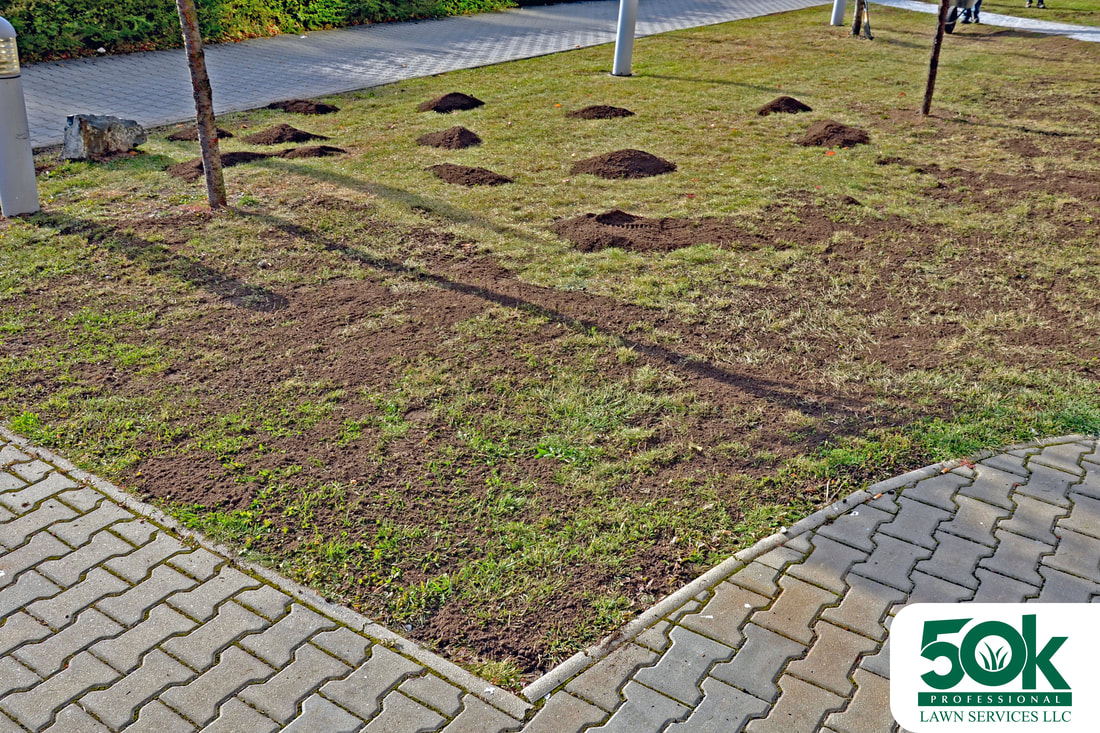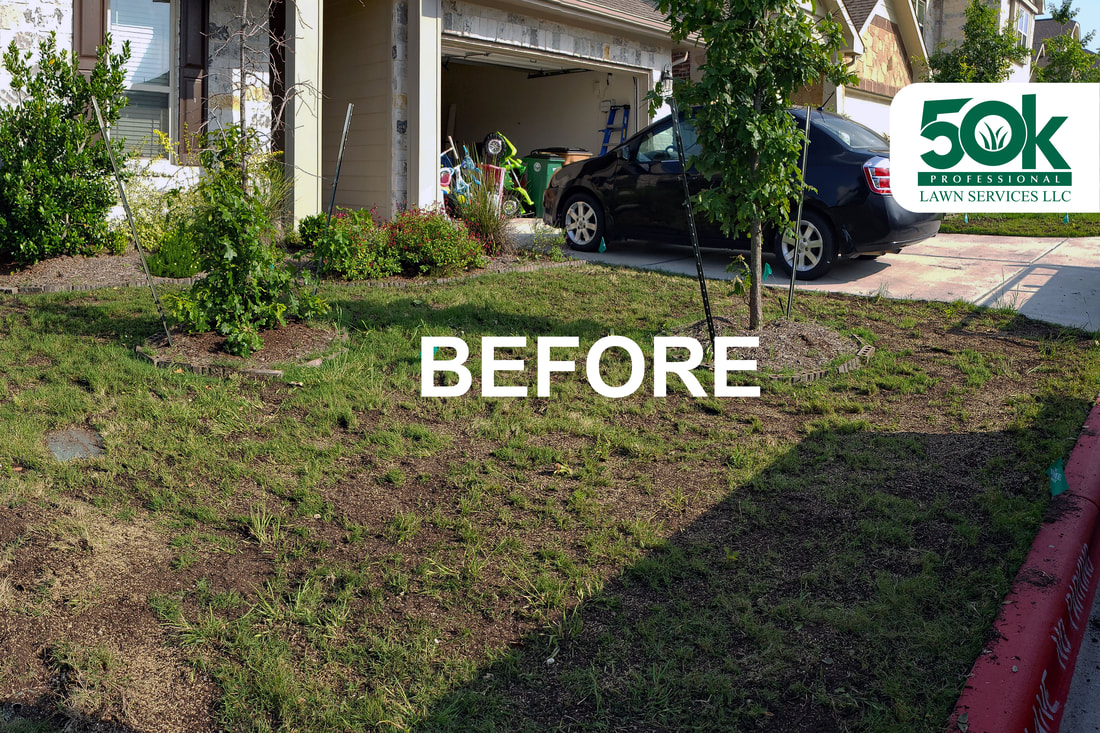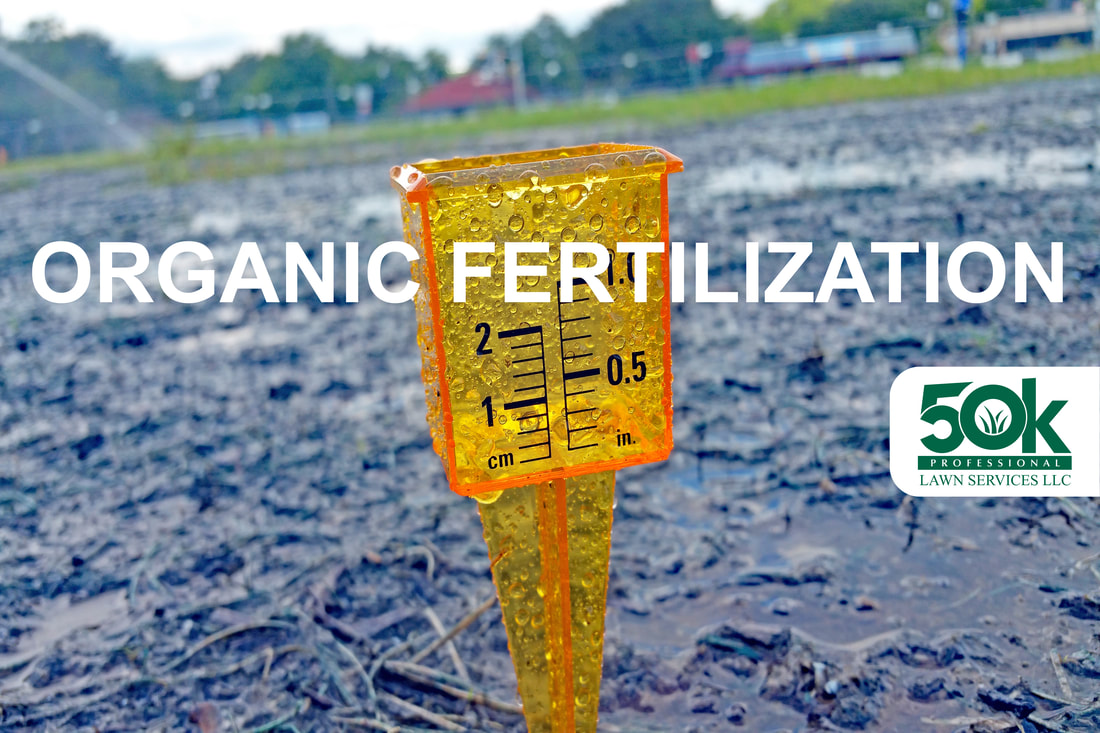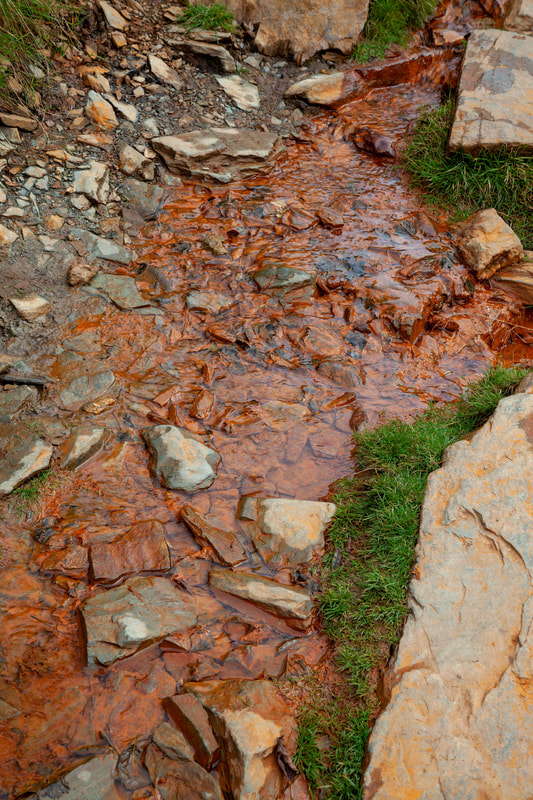Cultural and Biological Weed Control Management, 100% Organic and Natural. How do we do it?3/28/2023 We've been approached, researched, and investigated by multiple corporate giants and their industry investigators, all of whom have wondered, "How on earth do you control weeds without using our herbicides?" In this blog post, we aim to demystify the world of organic gardening. The ideas presented here are not original to us; instead, they are age-old practices handed down through generations of organic farmers. Unfortunately, much of this knowledge has been forgotten. We're here to immortalize these practices on the internet, helping to lessen our dependence on outdated chemical technologies. A little background about us: We're not a massive conglomerate but rather ordinary people who, like you, seek a normal, cancer-free life. From the beginning, we decided against using chemicals. We would rather not risk our health for profit. As a result, our journey has been filled with numerous obstacles and insurmountable challenges. We encountered a plethora of misinformation online, leaving us to wonder: either no one truly understands how to do organic weed control management correctly, or somebody is intentionally misinforming the public. Regardless, our goal was to find a 100% organic solution that works. Fortunately, we have discovered the answers that we are now presenting to you on a silver platter. There are several cultural and biological weed management strategies that homeowners like you (and even other companies) can use to control weeds in your lawns and gardens. These methods are more sustainable, environmentally friendly, and often more effective than using chemical herbicides. In fact, we are making this available to the public because as time goes by we really would rather have a societal paradigm shift. We would love to see the practices we found be use by other companies and lessen our overall exposure to chemicals.
When mulching around plant beds, avoid using weed fabric underneath the mulch layer. The reason for this is that organic mulch will naturally decompose over time, contributing to the nutrient cycling process and enriching the soil. Weed fabric can inhibit this decomposition process and may even create a barrier that prevents water and nutrients from reaching plant roots. Instead, opt for a thick layer of organic mulch, which will gradually break down and improve soil structure and fertility. As the mulch decomposes in plant beds, you may notice some weed germination or a decrease in the thickness of the mulch bed. This is an excellent time to hand weed specific areas and add more mulch to maintain its weed-suppressing abilities and continue promoting a healthy garden environment. Regularly monitoring and replenishing your mulch layers will ensure that your garden remains weed-free and vibrant. In lawns, areas that were top dressed would eventually be filled by perennial grasses. Note that this takes time. Root exudates propagate at 65F and warmer. If it is too cold, the lawn simply remains dormant until the right temperature comes. In addition to weed suppression, mulching provides other benefits such as moderating soil temperature, reducing soil erosion, and providing a habitat for beneficial insects and microorganisms. By incorporating mulching into your gardening routine, you can create a more sustainable, low-maintenance, and productive garden that thrives without the need for synthetic chemicals.
Leguminous cover crops, such as clover, have the unique ability to fix nitrogen from the atmosphere, making it bioavailable in the soil for future plant use. This characteristic can reduce or even eliminate the need for synthetic nitrogen fertilizers, promoting more sustainable urban and rural farming practices. Other cover crops, including buckwheat, barley, mustard, and radish, function as nutrient scavengers, preventing the loss of nutrients through leaching into groundwater or surface runoff. Cover crops also play a crucial role in soil conservation, particularly in highly eroded areas. They protect the soil surface from wind and water erosion while their root systems help anchor the soil, preventing the loss of valuable topsoil. Some cover crops produce allelopathic chemicals or attract beneficial insects that prey on pests, helping suppress soil-borne diseases and pests, reducing the need for chemical pesticides. Finally, cover crops contribute to a more balanced and resilient ecosystem by increasing plant diversity and providing habitat and food sources for beneficial insects, birds, and other wildlife. By integrating cover cropping into your gardening or farming practices, you can lessen unwanted weed germination, enhance soil health, productivity, and sustainability, working harmoniously with the environment.
Crop rotation and intercropping help break pest and disease cycles by reducing host plant availability, indirectly contributing to weed control by fostering healthier, more vigorous crop growth capable of competing with weeds. Relying exclusively on herbicides for weed control can result in herbicide-resistant weed populations. Employing crop rotation and intercropping as part of an integrated weed management strategy can minimize herbicide use and delay herbicide resistance development. Furthermore, crop rotation and intercropping boost biodiversity, attracting beneficial organisms like insects, birds, and microorganisms that help control weeds by consuming weed seeds or inhibiting weed growth. Overall, these practices contribute to more sustainable and environmentally friendly weed management solutions.
By carefully selecting companion plants that release allelopathic compounds or create physical barriers, you can naturally reduce weed growth and minimize the need for chemical weed control methods. Allelopathic plants: Certain plants release allelopathic chemicals that can inhibit the germination and growth of weeds. By planting these species alongside your desired plants, you create a natural form of weed suppression.
Examples of allelopathic plants include:
Examples include:
Incorporating a variety of plant species in your garden can make it more difficult for weeds to establish and thrive. Diverse plantings create a complex environment that offers different root structures, growth patterns, and resource competition, making it challenging for weeds to find a niche in which they can flourish. By using companion planting as part of your overall organic weed management strategy, you can create a more balanced and resilient ecosystem that naturally suppresses weed growth, reduces the need for chemical herbicides, and promotes healthier, more productive gardens. Lastly, the use of all the strategies above helps in creating a natural biological control. This is intelligent use of beneficial insects, such as ladybugs or lacewings, to control pests that can damage or weaken plants, can also indirectly help control weed growth. By combining these cultural and biological weed management strategies, homeowners can develop an integrated weed management approach that is effective, sustainable, and environmentally friendly. It's important to note that these methods require more time, expertise, and effort than using chemical herbicides, but the long-term benefits for soil health, plant productivity, and environmental health make them well worth the time investment. And this is where we come in. We do not sell a bag of fertilizer nor a bag of herbicide. That is the problem with doing things organically. It is not scalable and does not yield incredible returns. Fortunately, we just happen to love what we do. What we offer to our community is a lifelong commitment to organic lawn care and gardening in a highly urbanized environment. We are your personal organic farmer, but instead of propagating potatoes, we are growing grasses, and instead of growing giant sweet corns, we are propagating native flowers. Feel free to ask us any questions in the comments section below. We are here to help.
1 Comment
Many new clients have asked us about our weed targeting methods, and we want to clarify our approach. At 50k Professional Lawn Services LLC, we prioritize the health of the soil that your lawn grows in, rather than targeting individual weeds. We take inspiration from organic farms in America and from far flung areas in the world that has not yet been taken over by large conglomerates (yes, we travel the world to get unbiased information to apply to lawns), who use traditional methods to make their crops more resilient to pests, diseases, and weed infestations. By prioritizing soil health, we ensure that your lawn outgrows unwanted vegetation through crop rotation and propagation methods.
Unlike the tens of thousands of other lawn care companies in the industry, we do not rely on pre-emergent nor on post-emergent treatments to control weeds. Instead, we utilize cutting-edge soil science and traditional pre-World War farming methods to propagate lawns. We have extensively researched these methods, debunking misinformation along the way, and developed proprietary techniques to promote optimal soil health for lawns. Our comprehensive approach to organic lawn care includes a combination of soil science, traditional crop management techniques, and advanced technology. By focusing on the health of your soil, we are able to create a thriving, resilient lawn that can resist weeds, pests, and diseases. While we are neither a weed control nor a pest control company, our proprietary techniques have the inadvertent positive effects of suppressing both weed germination and pest infestation for reasons we still do not yet fully understand. Our hunch is a high brix indicator test of grass blade sap resists both through the natural breakdown of sugar in grass root exudation. But then again, this is just a hunch. Another hunch is the unavailability of nitrates in the soil makes it harder for weeds and pests to have immediate nutrients for growth: the lawn on the other hand has the ability to convert organic matter into nitrogen through bacterial decomposition; hence, the use of bacteria dominant compost tea. What we know for sure is that our proprietary method works. We take pride in offering a different kind of service not available anywhere else in Austin that is grounded in science and has been proven to produce impressive results in the real world. We simply focus on creating healthy soil conditions that are favorable to grass growth. That's all. Iron-based herbicides are now being sold as a one size fits all spray for all types of broadleaves. Iron-based weed control has even been proposed as a more natural alternative to chemical herbicides, which are known to have negative impacts on the environment and human health. But, the use of iron-based herbicides for weed control also has significant drawbacks, and in this blog post we will argue that their use should be carefully considered, minimized and even eliminated altogether in your garden routine. It is always best to attack the root cause of the problems (THE SOIL!). The first major problem with iron-based herbicides is their potential negative impact on soil microbiology. Iron is an essential nutrient for plants, but excessive amounts of iron can be toxic to soil microorganisms, which play a critical role in maintaining soil health and fertility. These microorganisms break down organic matter and cycle nutrients, including iron, to plants. The use of iron-based herbicides can lead to the accumulation of iron in the soil, which can inhibit the growth of beneficial microorganisms and disrupt nutrient cycling processes. This can have long-term impacts on soil health and plant productivity, and may require additional inputs of fertilizers and soil amendments to mitigate. In addition to their impacts on soil microbiology, and this is point number 2, iron-based herbicides can also have negative effects on aquatic ecosystems. When iron is applied, it can leach into nearby waterways, where it can be toxic to fish and other aquatic organisms. This can have significant ecological impacts, especially in areas where water quality is already compromised due to other stressors. Iron-based herbicides may also contribute to the formation of harmful algal blooms, which can further degrade water quality and harm aquatic life. In Austin, we have unfortunately had experienced this. Rivers that used to be deemed safe for dogs to swim are now off limits due to the risk of blue-green algal blooms. In fact, Austinites are now being warned to assume that all algal blooms harmful and to simply avoid it altogether. Third, iron-based herbicides are not always effective against all types of weeds. Some species may be resistant to iron-based herbicides, and multiple applications may be necessary to achieve adequate control. This can lead to increased costs, as well as elevated environmental risks and exposure associated with repeated applications. On top of this, iron-based herbicides can damage or kill desirable plants if not applied carefully or in the right conditions. This can have significant economic impacts especially those growing sensitive crops in their backyards. There is a reason why iron-based herbicides for weed control is highly regulated. There is a reason why the spray bottle has the word, "CAUTION", on its label. Fourth, while the initial cost of iron-based herbicides may be lower than chemical herbicides, the need for multiple applications and potential impacts on soil health may increase overall costs in the long run. Iron-based herbicides can be more expensive and less effective than just manually removing weeds by hand and maintaining soil health. This means that if broadleaves are all over your lawn, you have a soil problem, not an iron problem. Fifth issue with iron-based herbicides is their potential to contribute to the development of herbicide-resistant weeds. While iron-based herbicides are not currently used as widely as chemical herbicides, the repeated use of any herbicide can naturally select - through the Theory of Natural Selection, thank you very much Charles Darwin - for weed populations that are resistant to its mode of action. This can lead to the development of superweeds that are difficult or impossible to control, and may require even more toxic or expensive herbicides to manage. The potential for herbicide-resistant weeds is a significant concern, and the use of iron-based herbicides may exacerbate this problem. To conclude, while iron-based herbicides may offer some benefits as an alternative to chemical herbicides, their use should be carefully considered, minimized, and even eliminated whenever possible. The potential negative impacts on soil microbiology and aquatic ecosystems, as well as their limited effectiveness against some weed species, high costs, and potential to contribute to herbicide resistance, all highlight the need for caution when using these products. Homeowners should explore a range of weed control methods, including cultural and biological controls, ground covers, overseeding, checking for soil pH, availability of nutrients, core aeration, as well as manual removal, to develop a holistically integrated organic weed management strategies that are sustainable, cost-effective, and environmentally responsible. But then again, who are we? We may have a conflict of interest against iron-based herbicide manufacturers. That is why we are leaving the International Rice Research Institute (IRRI) to give the final word about iron toxicity in soil, "There is currently no practical field management option to treat iron toxicity." |
Call or Text |






